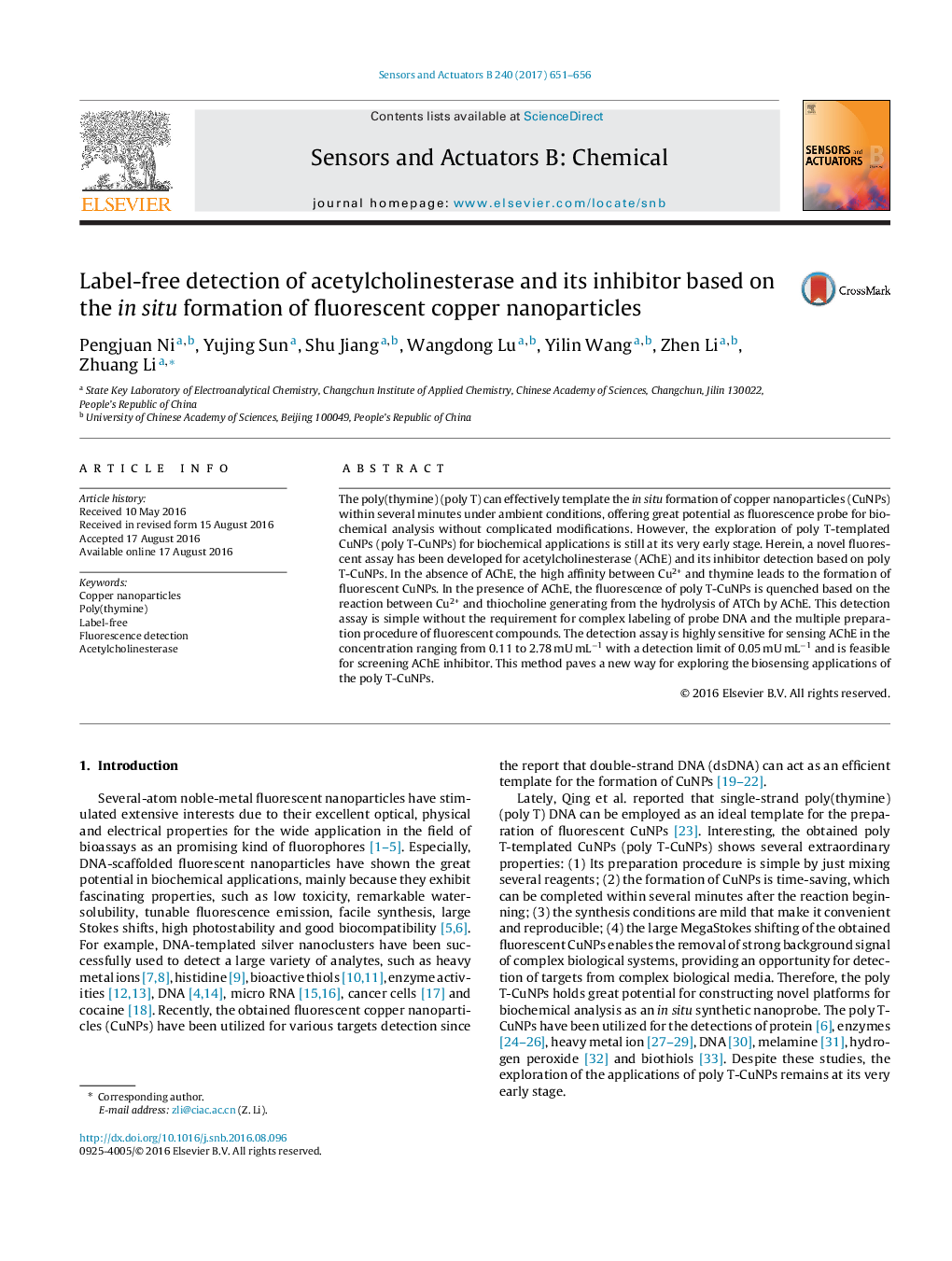| Article ID | Journal | Published Year | Pages | File Type |
|---|---|---|---|---|
| 5009619 | Sensors and Actuators B: Chemical | 2017 | 6 Pages |
â¢A novel fluorescent assay for AChE and its inhibitor detection has been developed.â¢This novel assay is based on the fluorescent copper nanoparticles.â¢This assay shows high sensitivity and selectivity for AChE activity detection.
The poly(thymine) (poly T) can effectively template the in situ formation of copper nanoparticles (CuNPs) within several minutes under ambient conditions, offering great potential as fluorescence probe for biochemical analysis without complicated modifications. However, the exploration of poly T-templated CuNPs (poly T-CuNPs) for biochemical applications is still at its very early stage. Herein, a novel fluorescent assay has been developed for acetylcholinesterase (AChE) and its inhibitor detection based on poly T-CuNPs. In the absence of AChE, the high affinity between Cu2+ and thymine leads to the formation of fluorescent CuNPs. In the presence of AChE, the fluorescence of poly T-CuNPs is quenched based on the reaction between Cu2+ and thiocholine generating from the hydrolysis of ATCh by AChE. This detection assay is simple without the requirement for complex labeling of probe DNA and the multiple preparation procedure of fluorescent compounds. The detection assay is highly sensitive for sensing AChE in the concentration ranging from 0.11 to 2.78Â mUÂ mLâ1 with a detection limit of 0.05Â mUÂ mLâ1 and is feasible for screening AChE inhibitor. This method paves a new way for exploring the biosensing applications of the poly T-CuNPs.
Graphical abstractA novel fluorometric assay for acetylcholinesterase and its inhibitor detection based on the in situ formation of fluorescent copper nanoparticles is proposed.Download high-res image (92KB)Download full-size image
